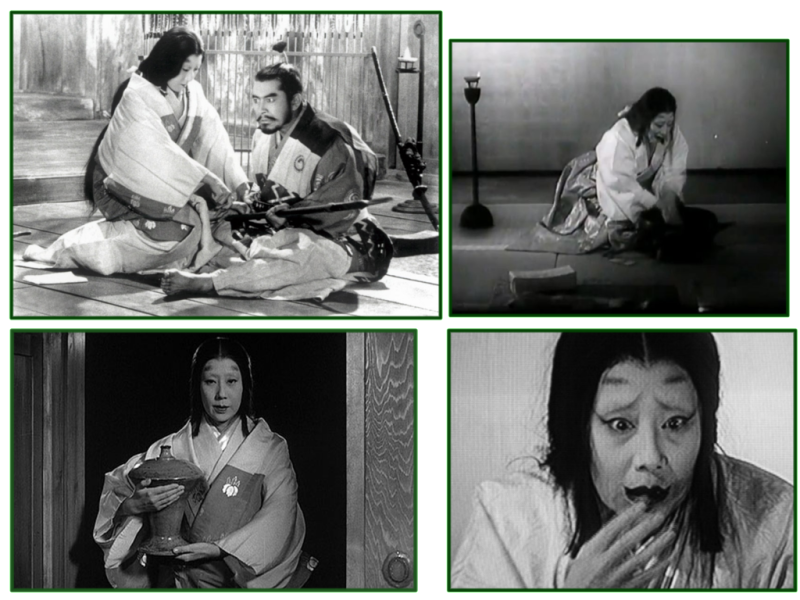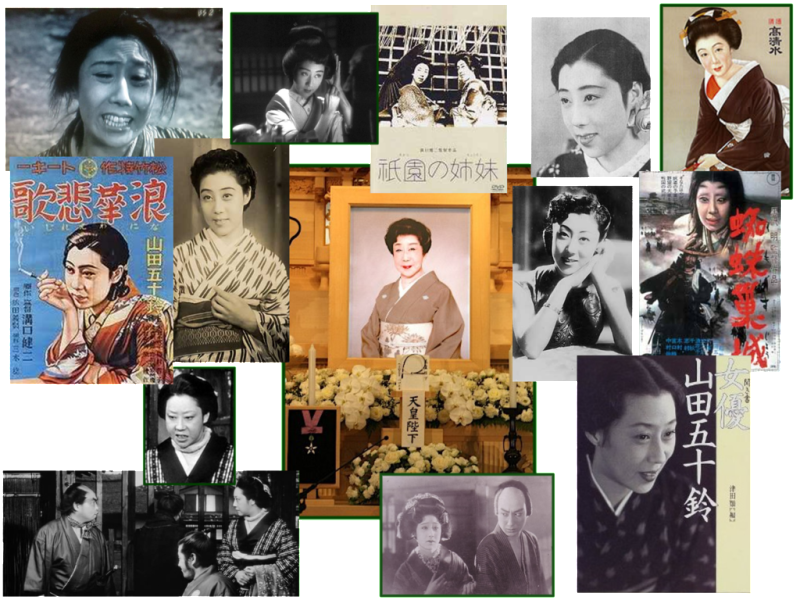Post by washi on Apr 20, 2015 19:10:00 GMT
When I first made this post I had been thinking a lot about how Shakespeare might have told a famous story from Japanese history. (Actually, I had started the project four years before, but I'd only just gotten around to finishing it.) While writing my own scenario, I couldn't help reflecting from time to time how successfully the great Japanese director Akira Kurosawa had translated two of Shakespeare's plays into his own eloquent cinemagraphic language. Ran (1985乱 "revolt; rebellion; war") was loosely based on a famous story about Mōri Motonari, a 16th century lord, and was already in planning before he became aware of many parallels with King Lear. Kumonosujō (1957 蜘蛛巣城 "Spider Web Castle," titled in English as Throne of Blood) was from the outset a telling of Macbeth in Japanese idiom, as anyone can plainly see by viewing the film or even reading a plot synopsis. I've seen both films a number of times, and regard both films as sufficiently great as to put them on my list of films that are worth seeing again.
Just as I was finishing my project, Isuzu Yamada, the actress who played the Lady Macbeth character in Throne of Blood passed away on July 9, 2012. With a little spare time on my hands, I decided that her passing was an appropriate occasion to see the film again. One of the disadvantages of being a foreigner living in Japan is that I have little access to English translations. While surfing through the Japanese movie channels I occasionally find classic films that I know, and sometimes I stop and watch them, but unfortunately, they never seem to have subtitles. This is also true for video releases, so thinking that Throne of Blood was on the cusp of the copyright period, I decided to try my luck on You Tube.

She was born on February 5, 1917, in a district of Osaka whose name is no longer officially used. (It was a bit of a challenge to find it, and I don't know the exact location, of course, but I was motivated by the desire to better understand the shape of the city nearly a century ago, before it became the megapolis that it is today. I obtained a fairly correct location by searching for businesses that still use the old place name, and the locating them, but the location of the placemark is merely on a rooftop where I thought the Layer icon might be more easily seen.)

The Dōtonbori Entertainment District When Yamada Was a Child
Located south of the Dōtonbori canal, it was the site of many theaters
and geisha houses, and is still the city's most famous entertainment area.
Her family was poor. Her father was an actor who specialize in playing feminine roles (onnagata) in a theatrical style called shinpa --"new school" -- in which kabuki acting styles were used in plays which dramatized modern stories. Her mother was a geisha and encouraged her daughter to study traditional Japanese performing arts of dance and music at an early age. She played her first film role in 1930, at the age of 14 (although owing to her height the character she played was 19.) Throughout her career she was famous for her discipline and devotion to her craft. One famous example is that as a young film actress she went every day to a film studio for a full year to study by observation the technique of the actors and the film making process.

Her early career was mostly in film acting, where she played strong, gritty women in films that had a feminist or at a least proto feminist theme. She worked with many of Japan's leading directors. Outside Japan, her work with Akira Kurosawa is best known. In The Lower Depths (1957どん底 Donzoko), the famous Gorki play, but set in Edo Period Japan, she played the greedy and selfish wife of the landlord. Her role in Yojimbo (1961用心棒 Yōjinbō ) is smaller but not inconsequential. (Like The Seven Samurai, Yojimbo was inspired by American western movie makers like John Ford and is set in late 19th century Japan. You may think you haven't seen it, but you probably have, either in the unauthorized remake, A Fistful of Dollars or the authorized one, The Last Man Standing.
Ms Yamada's career after the 60's was mostly on stage and in television. I see her on TV every once in a while, and would probably more often, if I shared my wife's enthusiasm for reruns of "jidaigeki," the Japanese equivalent of programs like Gunsmoke. She didn't retire until 2002. One of her stage roles required her character to play the samisen, perform rakugo (Japanese style "sit down" comedy), and recite gidayū, the chanted narration that accompanies kabuki, puppet theater, and other traditional theatrical styles (and for which, my wife proudly told me, when I asked her about it, her own maternal grandmother was once rather famous). Ms Yamada received numerous awards for her work, including being named a Person of Cultural Merit, and being the first actress to receive from the Emperor the most prestigious Order of Culture (which you can see displayed on her funeral alter).


